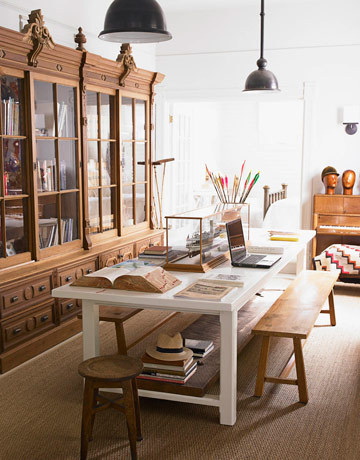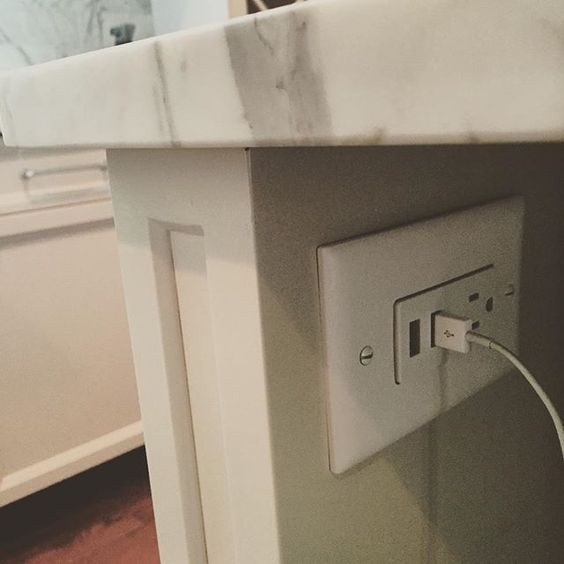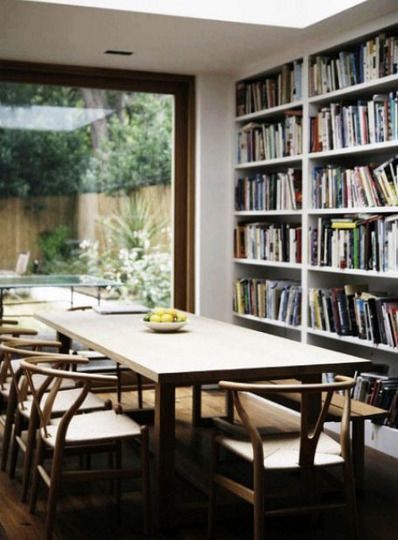The office has not developed the only workplace; a new level of mobility of the electrons - along with intense electronic dependence - leads to changes in the way homes are designed and how the work area is integrated into the life of the house.
Rachael Franchescina Interior Fonda in Chicago, IL is a former corporate interior designers who now focuses on living. She sees many parallels between what is happening in the office environment and at home. In recent history, most of the houses were designed with a certain variation of office space in the kitchen; However Franchescina said the last time a real "office space" in the kitchen takes probably three years ago. It should be noted that even in the residential sector to the "Tasks" dedicated to traditional is now much more integrated "activity-based planning the house penetrates, so now when I'm cooking, I did not in the office areas affected as before are usually. . space is wasted. people want to land on the island, the kitchen table or even watching television. "this means new positions, not dedicated to the rooms, and more integration of" work "and the life.

What's for these changes is very similar to the drivers of change in the office environment. After Franche China: "This is how the technology so disembedding the Home Office Now we have cell phones and iPads everywhere we go all certainly more mobile you do not put a lot of TVs in kitchens, because most children have iPads and mobile... , and because the battery takes 5 hours now, we do not have to be connected, wherever you are. "Ironically, however, with a lifetime battery due to our intensive integration of these devices, there are also new expectations in terms of the accessibility of energy anywhere and at any place, and new demands on options Last discreet.

Typically in the homes, we begin to see a trend, "right sizing." For a time, many people still built larger houses with more and more space. perhaps now, because of the sheer cost of real estate, environmental aspects and generations influences many people, the size or the right size Franche China try to reduce added. "In recent years, I did certainly much less additions. The people away begin by huge monstrosities suburbs to move, like today. People who make, instead add more using a smarter space."
While the green movement is much more informally in the residential side, it is still a factor in this movement to the right size, though still an unfortunate perception (and sometimes real) is obtained that green materials are more expensive. to ensure a major motivation in the right and the greening of homes is environmental: once the house is built, it must be heated and cooled. In this sense, larger homes tend to be much more effective. Whether driven by cost considerations and environmental, the result is the same: small houses and an intelligent use of space.
You generational also certainly have an effect. As baby boomers retire, they shrink. Franche China said .. "I believe that Millennials a big part of what drives them in big houses with intercom systems have grown big talk now with someone who research tells us that, in general, tend students to the experience value "things" to which such real estate experience leads to the desire of the most concrete elements. "
What this means in terms of traditional "home office?" This means that much less space is dedicated as a formal office space, and is more integrated. Now this does not mean that the home office for all. Many teleworkers in full-time, they still have dedicated an office space, but also for other things start to look a little different. This example Stock Franche China "For a person of everyone a formal dinner The kitchen island was made at the place where the people and adjacent to the surface of the island to collect used for meals. Many were eating in an office in the restaurant. Now people begin to keep the dining room or him, but they are much less formal return. the key to this formal informal office space / office generally any shelf or embedded is to help things, hide and support this multifunctional room furniture. this area functional many additional casual dining is, place the "adult" and '' child moves during the day to separate and can work as an office. ""

Allie Winstanley, founder and designer in studies of space is another residential interior designers corporate transition during the last decade. Spontaneously, echoing the comments of Frachneschina on downsizing, rightsizing and the global integration of home office was taken. But when asked specifically for the needs of furniture for these areas, he said. "Because of the reduced motion / shift, everything should be compact, since it is not in a remote area, should match the rest of the room integrated Look Both as possible. We need to be able to keep the things, so that when it functions of the long-term work are that not how you see food in the middle of the office. there are many limitations in functional products were, the work at home seemed genuinely integrated. the increasingly residential companies as the bedroom and the Council there have lines Home -office oriented. workspace can be created, but the furniture, which helps the feeling of living at home, even if the space I used to work. "

As for what is what the future of home office look, it is a mystery. Obviously there Tele full time and contractor offices are dedicated. The benefits of planning based on the activities of the office and at home are the same. People can perform tasks where and how they work best. The technology eliminates design constraints of the traditional planning and a lot of work to figure out to do with how the physical space to support unexplored behaviors must meet.
This entry was posted in the workplace Magazine March 2016 issue under the title "home offices are not defined by a space" and can be found at this link. It is published here with permission.
No comments:
Post a Comment